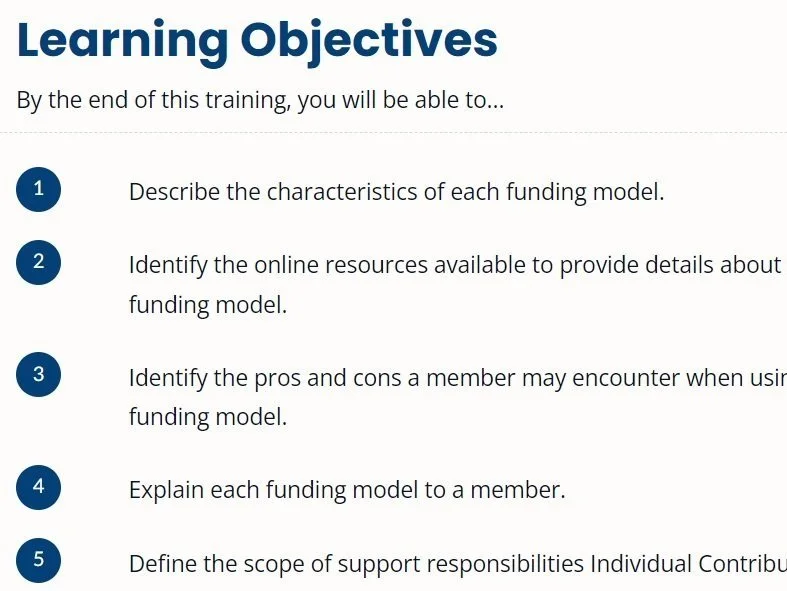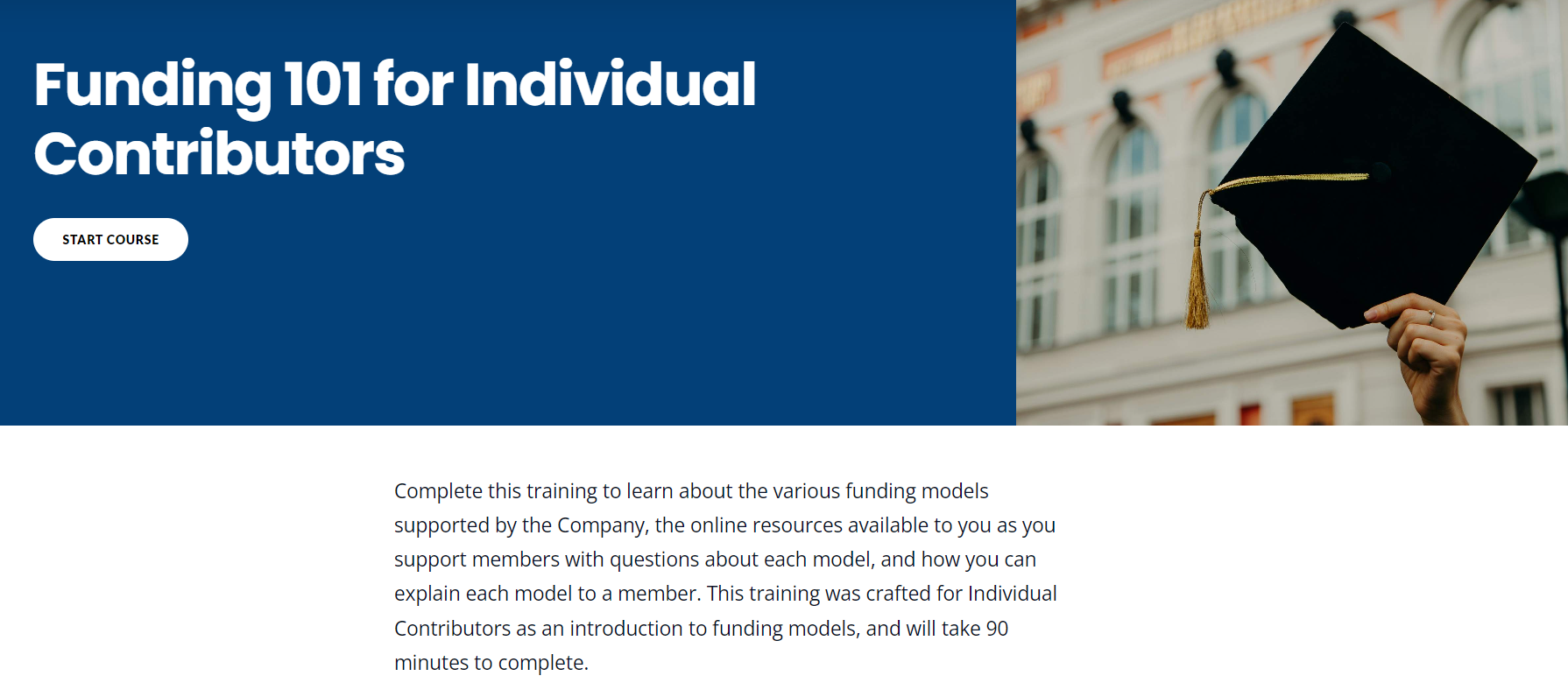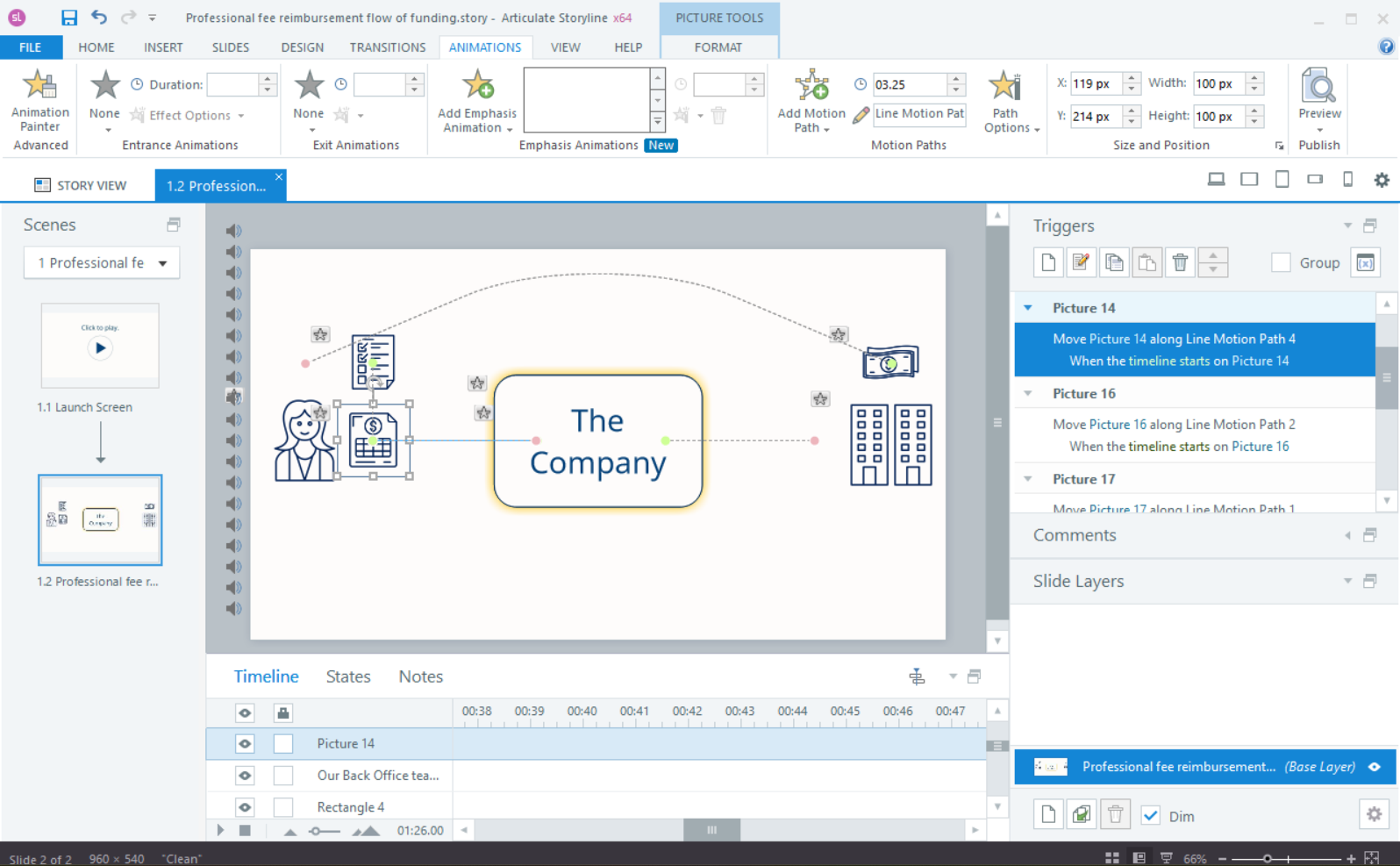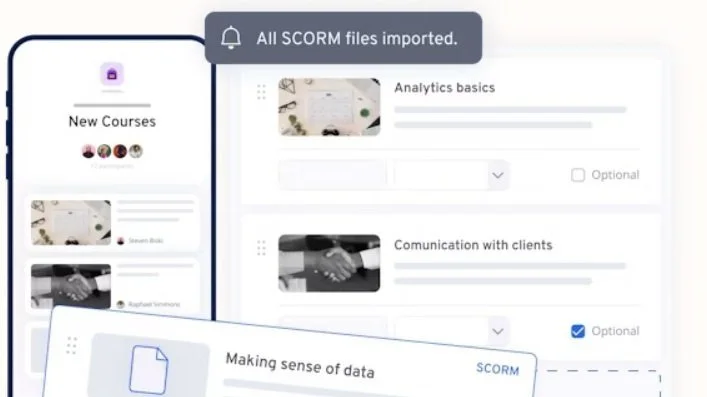eLearning Project
During my time at Guild, I was tasked with modernizing and enhancing the legacy new hire curriculum for the core front line teams of individual contributors. The legacy program consisted primarily of virtual instructor led sessions, where trainers would provide process details to learners. There was limited hands-on practice or measurement incorporated within the program. Through detailed needs analysis, I implemented a strategy to convert the majority of presented content to asynchronous eLearning, allowing the trainers to focus synchronous training efforts on application and evaluation.
This project highlights one such conversion.
NOTE: This course has been recreated from the version I created for Guild. As such, all Guild branding and proprietary information has been removed. Additionally, I have used text-to-speech for all audio elements. The generic branding and audio are meant to help viewers of the course to envision a similar learning experience customized to your specific needs.
Project Details
My Role
Needs analysis
Course design
Development and testing
Implementation management
Evaluation
Tools Used
Microsoft PowerPoint
TechSmith SnagIt
Articulate Storyline
Articulate Rise
Adobe PhotoShop
360Learning LMS
Timeline
Overall: 7 weeks from needs analysis to implementation
Needs analysis: 2 weeks
Design & development: 4 weeks
Implementation: 1 week
Evaluation: 4 months
Needs Analysis
-
I began by auditing the facilitation of the entire legacy new hire experience. This allowed me to see first-hand how the content and information was presented.
-
Next, I partnered with the Knowledge Management team to identify the existing online resources available addressing the information, processes, and procedures for the topic.
-
Next, I met with the senior leaders of the department to identify their goals, needs, and wants. These meetings helped me identify an initial strategy and scope for the project.
-
Next, I met with the program trainers to identify the tactics they felt were working well, the challenges they experienced with the legacy program, and the current state of the learning experience and outcomes.
-
Next, I created and launched a comprehensive survey to recent program graduates, People Leaders, Trainers, Quality Assurance Analysts, Knowledge Management Administrators, and Senior Leaders to determine the gaps and areas of opportunity for improvement. This provided me with a large amount of quantitative data on the general learning experience.
-
To gather qualitative data, I facilitated a series of focus groups with recent program graduates which provided learners an opportunity to share their experiences in an unrestricted manner. By doing so, I was able to tell a more complete story of the learning experience.
-
With my data in hand, I used Bloom's Taxonomy to identify the core learning objectives for the eLearning. Since this course is intended for the new hire experience for front line individual contributors, I knew that the objectives would primarily come from the three lower tiers of Remember, Understand, and Apply.
-
Finally, I compiled my findings in a slide deck and facilitated a Training Project Kick Off meeting with the Senior Leaders (stakeholders), Subject Matter Experts (SMEs), and Training Leaders.
During this meeting, I presented my findings and led a discussion on the strategy and approach I would be taking. Additionally, I worked with the team to create a RACI matrix for the project, established expectations, and identified next steps.
Outputs
-
Learning Objectives
Through robust analysis of the existing content, learner needs, stakeholder requirements, and individual contributor role expectations, I was able to craft Learning Objectives for the course.

-
Training Project Kick Off Slide Deck
Using the Training Project Kick Off Slide Deck template, I documented my findings and the project scoping details, including my strategy proposal and project team expectations. I then used the completed deck during my kick off meeting.

-
Training Project RACI
During the Training Project Kick Off meeting, I completed a RACI (Responsible, Accountable, Consulted, Informed) with the project team to ensure all team members understood and agreed to their roles in the project.

Course Design
-
I started the design phase by creating a detailed design document. In the document, I recorded the general flow of the course, where interactive activities would be included, what the topics of included videos would be, and what existing resources would be included for each lesson in the course.
I then shared the detailed design document with the project team for review, feedback, and approval.
-
Next, I created storyboards for the course and each video I planned to create. These storyboards documented all content, including the types of images I would use, audio scripting, and brand application standards.
I then shared the storyboards with the project team for review, feedback, and approval.
-
Finally, I shared the storyboards with the Senior Leader stakeholders for review, feedback, and final approval.
Outputs
-
Design Document
I used the Design Document template to record the flow of the course, included activities, video topics, and existing resources for each lesson.

-
Storyboards
Using the Storyboard template, I recorded every image asset, text on screen, and audio narration that would be included in the course and each video.

-
Stakeholder Sign Off
After thorough review and edits to incorporate feedback provided by the project team, I solicited final approval of the course design from the Senior Leader stakeholders.

Development & Testing
-
When initiating development, I produced the final image assets and icons, using stock libraries for pictures and the Noun Project website for icons.
-
As the videos for this course were largely created using moving icons, I used Articulate Storyline to create them.
For each video, I generated a review session using Articulate Review to gather feedback and approval with the project team.
-
I used Articulate Rise to create the course, curating the content from the Storyboards and adhering to corporate brand standards.
Once the full course was developed, I facilitated a review using Articulate Review to gather feedback from the project team.
-
I provided the review session link to a select group of end users from the team the course was designed for, as well as the trainers of the new hire curriculum. This provided an opportunity to ensure the content and activities would blend within the new curriculum seamlessly.
-
Once the final edits from the reviews was incorporated in the course, I shared the final full course with the Senior Leader Stakeholders for review, feedback, and approval.
-
With the course designed and developed, I loaded the SCORM file in our 360Learning LMS. Once ready, I facilitated accessibility testing of the course to ensure all WCAG standards were properly applied, making any edits necessary to ensure the content would be accessible to all learners.
Outputs
-
Final Video Assets
I created the videos in Articulate Storyline, and embedded them as Interactive objects within the Articulate Rise course.

-
Final eLearning
I created the eLearning course in Articulate Rise, and used Articulate Review to facilitate feedback gathering.

-
Stakeholder Sign Off
I solicited final approval of the developed course from the Senior Leader stakeholders using Articulate Review.

Implementation Management
-
Once the course was fully tested and approved, I added the course to the larger new hire curriculum within our 360Learning LMS.
-
Prior to the next new hire cohort, I worked with the Training Delivery team to introduce the new course, identify the actions necessary to incorporate the course within their lesson plans, and provide an opportunity for the trainers to ask any questions they might have.
-
Finally, I moved all of the source files for the project to our team shared drive, and ensured the other Learning Designers were all added as contributors in Articulate for future maintenance and edits of the content.
Evaluation
-
I used instant surveys to gather feedback from learners on their initial reaction to the course.
Average Net Promoter Score was 3.9 (of 4.0) after two new hire cohorts
Average Applicability of Content Score was 3.8 (of 4) after two new hire cohorts
-
I created a 20-question knowledge check covering the core behaviors and knowledge introduced within the course. Questions were scenario-based, and tied directly to the Learning Objectives of the course.
Average Knowledge Check Scores for the first two new hire cohorts were 89%
-
I used automated surveys of the learners from the new hire cohorts, triggered at 30, 60, and 90 days post training to gather data about learner confidence and skill application. Additionally, surveys were sent to the People Leaders of the new hires on the same cadence.
Average confidence with skills increased from 2.75 to 4.01 (of 5)
Average skill application increased from 3.00 to 4.25 (of 5)





